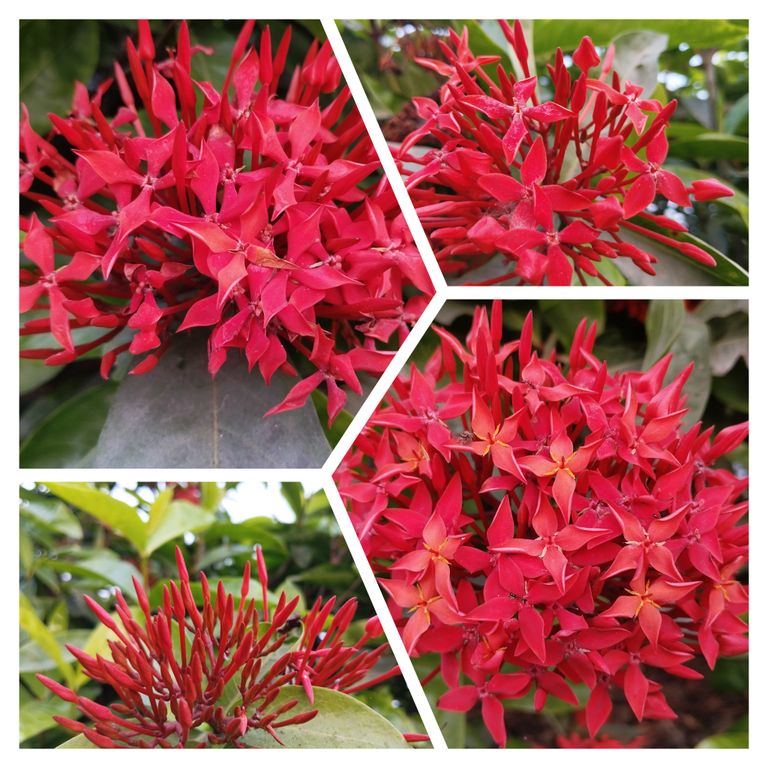
Rangan Flower Garden A Burst of Beauty and Vibrancy.
A garden filled with Rangan flowers (Ixora) is a sight to behold. Known for its vibrant colors and dense clusters, Rangan is a favorite choice for gardeners who want to create a lively and inviting atmosphere. This evergreen shrub is not only stunning but also easy to maintain, making it perfect for home gardens, parks, and public spaces.
In this blog, we will explore the beauty of Rangan flowers, how to cultivate a thriving Rangan garden, and the benefits of having these wonderful blooms in your surroundings.
The Beauty of Rangan Flowers
Rangan, or Ixora, is a genus of flowering plants in the Rubiaceae family. Native to tropical and subtropical regions, these flowers are famous for their bright and eye-catching hues. The most common colors are red, orange, yellow, pink, and white. The flowers grow in dense clusters, creating a spectacular floral display.
Characteristics of Rangan Flowers
- Evergreen Shrub: The plant retains its lush green leaves throughout the year.
- Clusters of Blooms: The flowers grow in round, tight bunches, adding a unique texture to gardens.
- Wide Color Variety: From fiery red to soft pink, there’s a shade to suit every garden.
- Long Blooming Season: Rangan flowers bloom almost year-round, especially in warm climates.
How to Grow a Rangan Flower Garden
Cultivating a garden filled with Rangan flowers is relatively easy if you follow the right techniques.
- Choosing the Right Location
Rangan thrives in full sunlight. Ensure your garden gets at least 5-6 hours of direct sunlight daily.
It can tolerate partial shade but may not bloom as profusely.
- Soil Preparation
The plant prefers well-draining, slightly acidic soil (pH 5.5–6.5).
Enrich the soil with organic compost or cow dung manure for better growth.
Avoid waterlogging, as it can lead to root rot.
- Watering Schedule
Water moderately, keeping the soil moist but not soggy.
In hot summers, water the plant 2-3 times a week.
Reduce watering during the monsoon to prevent fungal diseases.
- Fertilization
Apply a balanced fertilizer (NPK 10-10-10 or 20-20-20) once a month.
Organic options like banana peel compost, bone meal, and vermicompost can enhance flowering.
Add iron sulfate occasionally to maintain healthy, dark green foliage.
- Pruning and Maintenance
Regular pruning keeps the plant in shape and encourages new growth.
Remove dead or dried flowers to boost continuous blooming.
Trim overgrown branches after flowering seasons to maintain a compact look.
Benefits of a Rangan Flower Garden
Apart from being a visual delight, Rangan flowers provide several benefits:
- Attracts Pollinators
Bees and butterflies love Rangan flowers, making them a great addition to eco-friendly gardens.
They support biodiversity by helping in the pollination of other plants.
- Medicinal Uses
In Ayurveda and traditional medicine, Rangan is known for its antibacterial and anti-inflammatory properties.
The leaves and roots are sometimes used to treat wounds and skin infections.
- Enhances Landscape Beauty
The compact and bushy growth makes it perfect for hedges, borders, and standalone plants.
It can be grown in pots, containers, or directly in garden beds.
- Low Maintenance
Requires minimal care compared to other ornamental plants.
Resilient to pests and diseases when grown in the right conditions.
Best Companion Plants for Rangan Garden
Pairing Rangan flowers with other plants can create a harmonious garden:
Marigolds: Their bright yellow and orange colors complement red Rangan flowers.
Hibiscus: Both thrive in similar conditions and add a tropical touch.
Jasmine: The sweet fragrance balances the vibrant Rangan blooms.
Coleus: Its multicolored foliage enhances the garden’s visual appeal.
Rangan in Cultural and Religious Significance
In many cultures, Rangan flowers are considered sacred and are often used in religious offerings. In Hindu rituals, the bright red flowers symbolize purity and devotion. They are also commonly used in temple decorations and floral garlands.
In some parts of Asia, Rangan is planted near homes as a symbol of good luck and prosperity.
Conclusion
A Rangan flower garden is a perfect way to bring color, beauty, and positive energy into your surroundings. With minimal care and a little love, these stunning flowers can bloom year-round, transforming any space into a vibrant paradise.
If you’re looking for an easy-to-grow, visually stunning plant that attracts pollinators and adds charm to your garden, Rangan is an excellent choice. Start your Rangan garden today and enjoy nature’s colorful masterpiece Would you like help choosing the best Rangan varieties for your garden? Let me know.
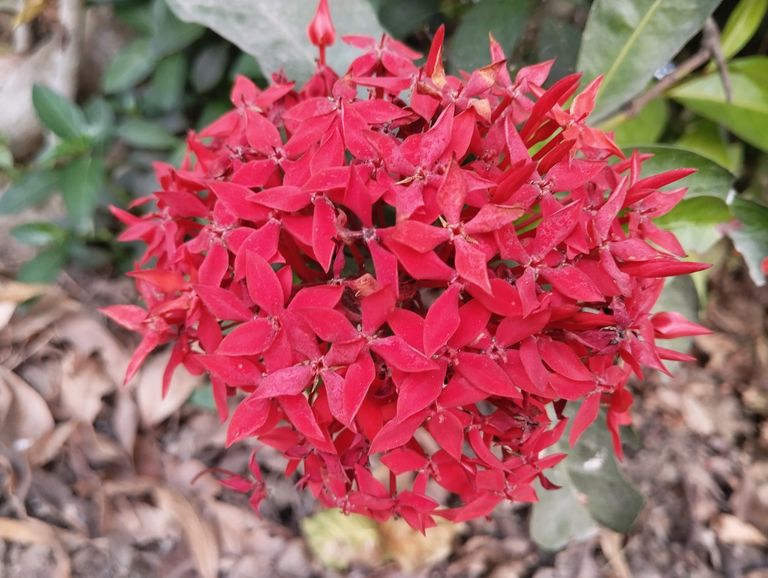
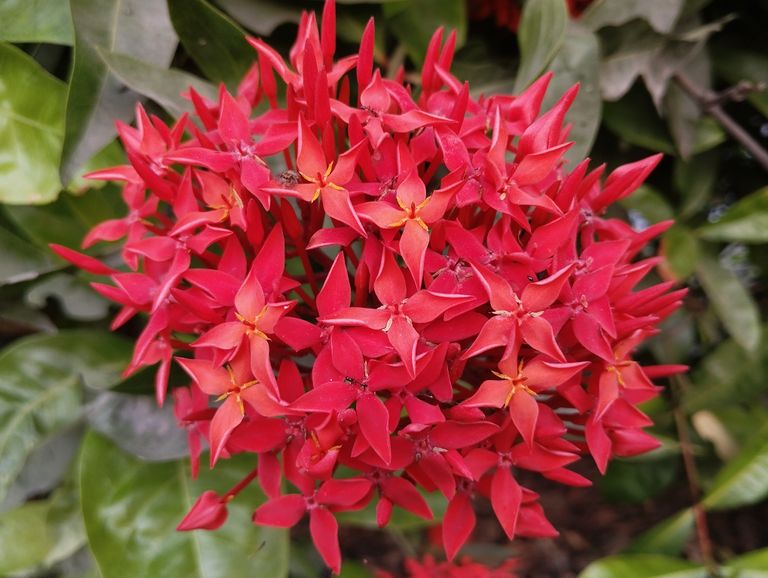
The Splendor of Rangon Flowers: Nature’s Fiery Delight
Nature has gifted us with countless beautiful flowers, each with its own charm and significance. Among them, the Rangon flower, also known as Ixora, stands out for its vibrant hues, rich cultural symbolism, and medicinal properties. Found in tropical and subtropical regions, Rangon flowers are a common sight in gardens, parks, and temple courtyards. Their bright clusters of blossoms not only enhance the beauty of their surroundings but also attract butterflies and bees, contributing to the ecosystem.
In this blog, we will explore the enchanting world of Rangon flowers, their varieties, cultural importance, medicinal uses, and gardening tips.
The Beauty of Rangon Flowers
Rangon flowers belong to the Ixora genus, which consists of more than 500 species. These flowers bloom in dense clusters, creating a stunning display of colors ranging from red, orange, pink, yellow, and even white. Their waxy petals and evergreen foliage make them a year-round delight in tropical gardens.
The most common variety is the red Rangon flower (Ixora coccinea), often associated with passion, energy, and devotion. The plant is a shrub or small tree, growing up to 3–5 feet (1–1.5 meters) in height, though some wild species can grow even taller.
Cultural and Religious Significance
Rangon flowers hold deep cultural and religious significance, especially in Hinduism and Buddhism. They are frequently used in temple offerings, religious ceremonies, and festivals. Their fiery red color symbolizes strength, purity, and devotion, making them a favorite choice for worship.
In Indian and Southeast Asian traditions, Rangon flowers are associated with Lord Vishnu and Goddess Lakshmi, representing divine blessings and prosperity. In Buddhist cultures, they symbolize enlightenment and are often found near monasteries.
In addition to their religious importance, Rangon flowers are used in weddings, garlands, and home decorations. Their long-lasting blooms and vibrant colors make them a popular choice for floral arrangements.
Medicinal and Ayurvedic Benefits
Beyond their aesthetic and cultural value, Rangon flowers have been used in traditional medicine for centuries. Ayurveda and folk medicine recognize their healing properties, and different parts of the plant are used to treat various ailments.
Here are some key medicinal benefits of Rangon flowers:
- Skin Care and Healing Wounds
The antibacterial and anti-inflammatory properties of Rangon flowers make them useful for treating skin infections, wounds, and acne. A paste made from the flowers can be applied to affected areas to speed up healing.
- Fever and Flu Remedy
In traditional medicine, Rangon leaves and flowers are used to reduce fever and relieve flu symptoms. Herbal teas made from Ixora extracts are believed to boost immunity.
- Digestive Health
Rangon flower extracts are known to improve digestion and help with stomach ailments such as diarrhea and dysentery. The plant’s roots and leaves are often used in herbal tonics for digestive disorders.
- Pain Relief
In some cultures, Rangon flowers are used as a natural pain reliever for headaches, muscle pain, and arthritis. A decoction of the leaves is commonly used as a home remedy.
- Anti-Stress and Relaxation
The mild fragrance and calming properties of Rangon flowers are used in aromatherapy to relieve stress, anxiety, and insomnia. The flowers are sometimes included in herbal baths for relaxation.
Gardening and Care Tips for Rangon Flowers
Rangon flowers are relatively easy to grow, making them a popular choice for home gardens and landscapes. They thrive in warm climates and require minimal maintenance if planted in the right conditions.
- Soil Requirements
Rangon plants prefer well-drained, slightly acidic soil. Adding organic compost helps improve soil quality and ensures healthy growth.
- Sunlight and Temperature
These flowers love sunlight and should be placed in a spot that receives at least 4–6 hours of direct sunlight daily. They thrive in temperatures between 20°C to 35°C (68°F to 95°F).
- Watering Needs
Ixora plants require moderate watering. Overwatering can lead to root rot, so it’s best to allow the soil to dry slightly between waterings. During the summer months, they need more frequent watering.
- Pruning and Maintenance
Regular pruning helps maintain the plant’s shape and encourages more blooms. Removing dried or dead flowers ensures continuous flowering throughout the season.
- Fertilization
A balanced liquid fertilizer or organic compost can be applied every 2–3 months to promote healthy growth and abundant flowering.
- Pest and Disease Control
Rangon plants are generally resistant to pests, but they can occasionally suffer from aphids, mealybugs, and fungal infections. Using organic insecticides or neem oil can help keep these problems in check.
Rangon Flowers in Landscaping
Because of their bushy growth and bright blooms, Rangon flowers are commonly used in landscaping designs. They make excellent hedges, borders, and ornamental shrubs. Some creative ways to use Rangon flowers in your garden include:
Hedges and Borders: Their dense foliage makes them ideal for natural fencing.
Container Gardening: Rangon plants can be grown in large pots or containers for patios and balconies.
Butterfly Gardens: Their nectar-rich flowers attract butterflies and bees, adding life to any garden.
Mixed Flower Beds: They pair beautifully with roses, hibiscus, and marigolds for a colorful display.
Symbolism and Folklore
In many cultures, Rangon flowers are believed to bring good luck and protection. Some folklore traditions say that planting Rangon near a home wards off negative energy. In Southeast Asia, the flowers are sometimes used in love potions and traditional rituals.
In literature and poetry, Rangon flowers often symbolize passion, resilience, and beauty. Their fiery red hues represent the intensity of emotions, making them a favorite metaphor for love and devotion.
Conclusion
The Rangon flower is more than just a pretty bloom—it is a symbol of passion, devotion, and healing. Whether used in religious ceremonies, traditional medicine, or as a vibrant addition to gardens, its presence brings joy and beauty. With minimal care and the right conditions, Rangon plants can thrive and brighten any space.
So, if you are looking for a hardy, low-maintenance, and colorful plant, consider adding Rangon flowers to your garden. Their year-round blooms and cultural significance make them a true gift of nature.
Would you like to grow Rangon flowers in your garden? Let us know your thoughts in the comments below.
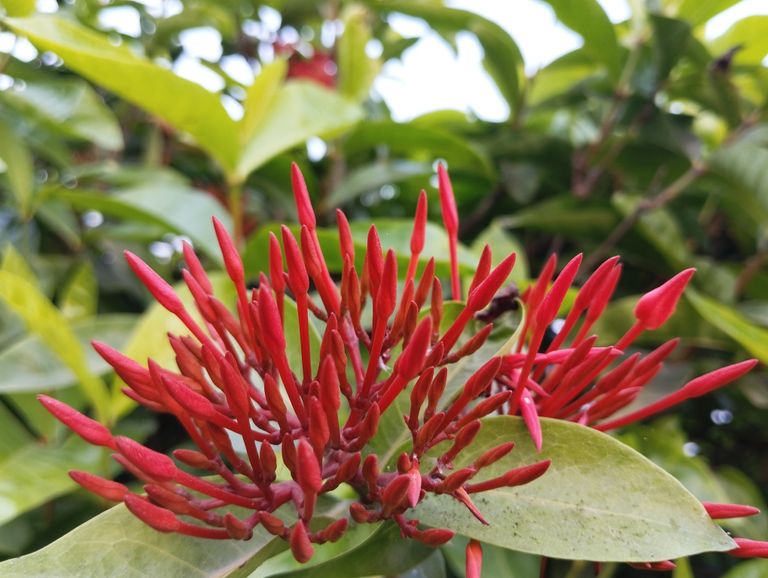
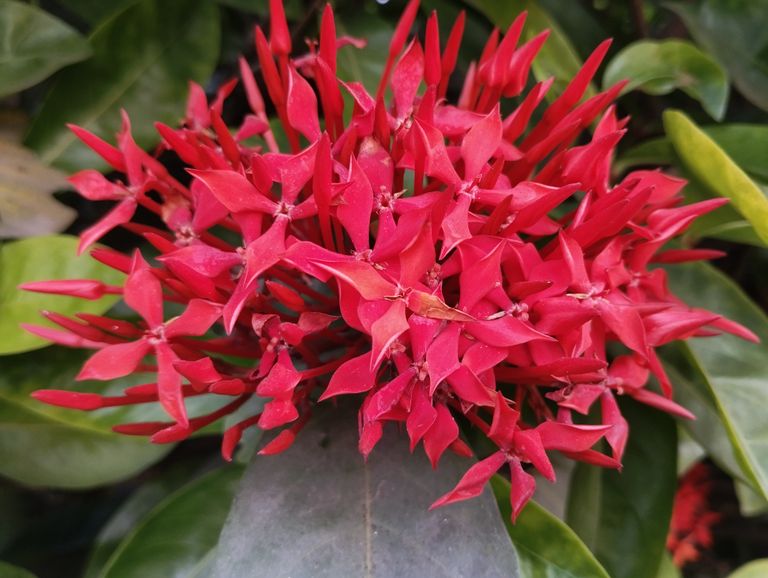
How to Grow and Care for Rangan Flower Plant in a Pot
Rangan (Ixora) is a beautiful flowering plant known for its bright, vibrant clusters of flowers. It is commonly found in tropical and subtropical regions and is widely used for ornamental purposes. If you want to grow Rangan flowers in a pot, this guide will provide you with everything you need to know about planting, caring, and maintaining this stunning plant.
Why Grow Rangan in a Pot?
Growing Rangan in a pot is an excellent choice for gardeners with limited space. It allows flexibility in placement, better soil control, and easier maintenance. Potted Rangan plants can be kept on balconies, patios, or terraces, adding a splash of color to any space.
Choosing the Right Pot
Selecting the right pot is crucial for the healthy growth of your Rangan plant. Here are some key factors to consider:
Size: A medium to large pot (12-18 inches in diameter) is ideal. Rangan plants have a strong root system, so they need enough space to grow.
Material: Terracotta or ceramic pots are best as they provide good aeration and prevent waterlogging.
Drainage: Ensure the pot has multiple drainage holes to avoid root rot.
Best Soil for Rangan Plant
Rangan thrives in well-draining, slightly acidic soil. You can prepare the best soil mix by combining:
50% garden soil
30% compost or organic manure
10% sand for better drainage
10% coco peat or peat moss to retain moisture
Adding organic fertilizers like vermicompost or cow dung manure improves soil fertility.
How to Plant Rangan in a Pot
Follow these simple steps to plant your Rangan in a pot:
- Prepare the pot: Fill it with the prepared soil mix, leaving some space at the top.
- Select a healthy plant: Choose a strong sapling with green leaves and no signs of disease.
- Planting: Dig a small hole in the center, place the sapling, and cover the roots with soil.
- Watering: Water the plant thoroughly after planting to help it settle.
Sunlight Requirements
Rangan plants love sunlight and require at least 4-6 hours of direct sunlight daily. Place the pot in a location where it receives ample morning or afternoon sunlight.
Watering Routine
Water the plant 2-3 times a week during normal weather.
In summer, increase watering frequency to prevent drying out.
In winter or rainy seasons, reduce watering to avoid overwatering.
Always check the topsoil; if it feels dry, it's time to water.
Fertilization
To encourage lush growth and abundant flowering, use fertilizers regularly:
Organic compost: Apply once every 2 weeks.
Liquid fertilizers: Use diluted fish emulsion or seaweed extract every 15 days.
Balanced NPK (10-10-10 or 19-19-19): Apply once a month for better blooms.
Pruning and Maintenance
Trim dead or dried branches to promote fresh growth.
Pinch off old flowers to encourage new blooms.
Prune the plant in early spring to maintain shape and size.
Common Pests and Diseases
Rangan plants are generally hardy but may face issues like:
Aphids & Mealybugs: Treat with neem oil spray.
Fungal infections: Avoid overwatering and use a fungicide if needed.
Yellowing leaves: May indicate nutrient deficiency; apply organic fertilizers.
Repotting
Repot your Rangan plant every 2-3 years to refresh the soil and allow better root growth.
Conclusion
Growing Rangan in a pot is simple and rewarding. With the right care, sunlight, and watering schedule, you can enjoy beautiful flowers throughout the year. Whether for decoration or spiritual purposes, this plant brings beauty and positivity to your home.
Would you like me to add more details on any section?
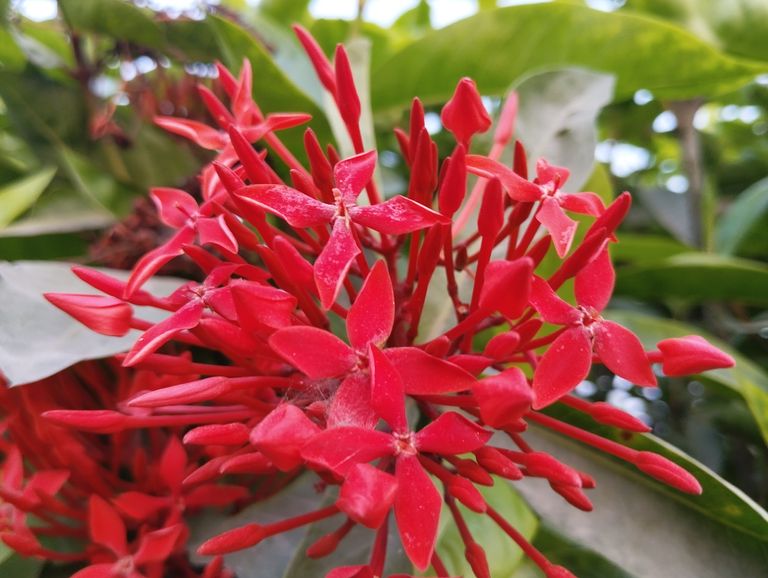
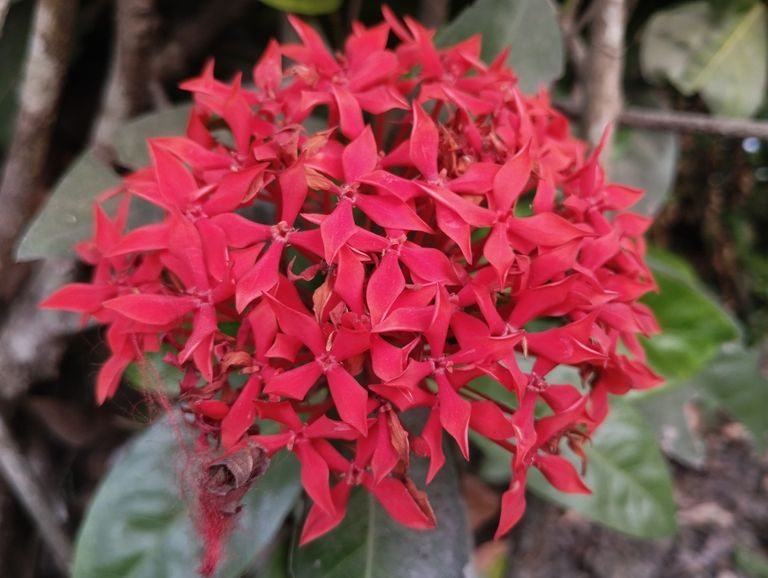
How to Grow and Care for Rangan Flower Plant in a Pot
Rangan (Ixora) is a beautiful flowering plant known for its bright, vibrant clusters of flowers. It is commonly found in tropical and subtropical regions and is widely used for ornamental purposes. If you want to grow Rangan flowers in a pot, this guide will provide you with everything you need to know about planting, caring, and maintaining this stunning plant.
Why Grow Rangan in a Pot?
Growing Rangan in a pot is an excellent choice for gardeners with limited space. It allows flexibility in placement, better soil control, and easier maintenance. Potted Rangan plants can be kept on balconies, patios, or terraces, adding a splash of color to any space.
Choosing the Right Pot
Selecting the right pot is crucial for the healthy growth of your Rangan plant. Here are some key factors to consider:
Size: A medium to large pot (12-18 inches in diameter) is ideal. Rangan plants have a strong root system, so they need enough space to grow.
Material: Terracotta or ceramic pots are best as they provide good aeration and prevent waterlogging.
Drainage: Ensure the pot has multiple drainage holes to avoid root rot.
Best Soil for Rangan Plant
Rangan thrives in well-draining, slightly acidic soil. You can prepare the best soil mix by combining:
50% garden soil
30% compost or organic manure
10% sand for better drainage
10% coco peat or peat moss to retain moisture
Adding organic fertilizers like vermicompost or cow dung manure improves soil fertility.
How to Plant Rangan in a Pot
Follow these simple steps to plant your Rangan in a pot:
- Prepare the pot: Fill it with the prepared soil mix, leaving some space at the top.
- Select a healthy plant: Choose a strong sapling with green leaves and no signs of disease.
- Planting: Dig a small hole in the center, place the sapling, and cover the roots with soil.
- Watering: Water the plant thoroughly after planting to help it settle.
Sunlight Requirements
Rangan plants love sunlight and require at least 4-6 hours of direct sunlight daily. Place the pot in a location where it receives ample morning or afternoon sunlight.
Watering Routine
Water the plant 2-3 times a week during normal weather.
In summer, increase watering frequency to prevent drying out.
In winter or rainy seasons, reduce watering to avoid overwatering.
Always check the topsoil; if it feels dry, it's time to water.
Fertilization
To encourage lush growth and abundant flowering, use fertilizers regularly:
Organic compost: Apply once every 2 weeks.
Liquid fertilizers: Use diluted fish emulsion or seaweed extract every 15 days.
Balanced NPK (10-10-10 or 19-19-19): Apply once a month for better blooms.
Pruning and Maintenance
Trim dead or dried branches to promote fresh growth.
Pinch off old flowers to encourage new blooms.
Prune the plant in early spring to maintain shape and size.